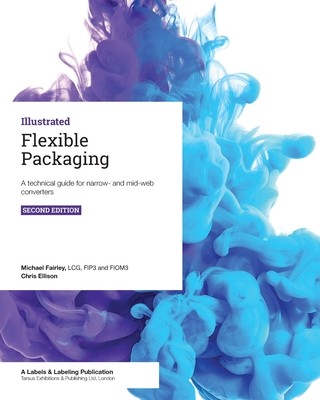
- We will send in 10–14 business days.
- Author: Chris Ellison
- Publisher: Tarsus Exhibitions & Publishing Ltd
- ISBN-10: 1910507210
- ISBN-13: 9781910507216
- Format: 20.3 x 25.4 x 0.6 cm, minkšti viršeliai
- Language: English
- SAVE -10% with code: EXTRA
Reviews
Description
Flexible packaging today has one of the highest growth rates across all printing sectors, achieving an annual global growth of close to five percent. Important trends include smaller run lengths, a requirement for multi-versions and variations, personalization and a growing interest in adding in-line value ‒ all undoubted opportunities for narrow- and mid-web label converters (using both flexo and digital technology) to capture a growing portion of the flexibles market.
Jobs with the shortest run sizes are in pouches of any kind, as well as in single serve and one-dose packs and sachets. These are key areas where label converters can most readily enter the flexible packaging market. Indeed, narrower and mid-web conventional and digital printing has effectively opened up the market to a whole range of new customers who have never previously had a solution for short-run flexible packaging orders.
But it's not all quite straightforward for a label converter to move into flexible packaging. They need to have a comprehensive understanding of paper, foil and filmic substrates ‒ as well as multi-layer constructions and barrier properties, of pack sealing, and of the specific user requirements needed for the many different types of liquids, powders, gels, creams and solids that have to be packaged. Pre-press requirements are different, inks have to withstand sealing, web- and sealing widths are important, co-efficient of slip can be critical, while a good understanding of form, fill and seal machines is ideal.
Now in its second edition and updated with a new chapter and content, this book has set out to provide both the knowledge and expert guidance for label and other converters looking to enter or expand their production into flexible packaging ‒ a key stepping stone to success.
Chapters include:
- Flexible packaging - an introduction
- Paper and board, metallic foil, films and multi-layer constructions
- Types of flexible packaging and special constructions
- Pre-press, printing and converting
- Understanding forming, filling, sealing and lidding operations
- Markets, applications and opportunities
EXTRA 10 % discount with code: EXTRA
The promotion ends in 23d.07:44:15
The discount code is valid when purchasing from 10 €. Discounts do not stack.
- Author: Chris Ellison
- Publisher: Tarsus Exhibitions & Publishing Ltd
- ISBN-10: 1910507210
- ISBN-13: 9781910507216
- Format: 20.3 x 25.4 x 0.6 cm, minkšti viršeliai
- Language: English English
Flexible packaging today has one of the highest growth rates across all printing sectors, achieving an annual global growth of close to five percent. Important trends include smaller run lengths, a requirement for multi-versions and variations, personalization and a growing interest in adding in-line value ‒ all undoubted opportunities for narrow- and mid-web label converters (using both flexo and digital technology) to capture a growing portion of the flexibles market.
Jobs with the shortest run sizes are in pouches of any kind, as well as in single serve and one-dose packs and sachets. These are key areas where label converters can most readily enter the flexible packaging market. Indeed, narrower and mid-web conventional and digital printing has effectively opened up the market to a whole range of new customers who have never previously had a solution for short-run flexible packaging orders.
But it's not all quite straightforward for a label converter to move into flexible packaging. They need to have a comprehensive understanding of paper, foil and filmic substrates ‒ as well as multi-layer constructions and barrier properties, of pack sealing, and of the specific user requirements needed for the many different types of liquids, powders, gels, creams and solids that have to be packaged. Pre-press requirements are different, inks have to withstand sealing, web- and sealing widths are important, co-efficient of slip can be critical, while a good understanding of form, fill and seal machines is ideal.
Now in its second edition and updated with a new chapter and content, this book has set out to provide both the knowledge and expert guidance for label and other converters looking to enter or expand their production into flexible packaging ‒ a key stepping stone to success.
Chapters include:
- Flexible packaging - an introduction
- Paper and board, metallic foil, films and multi-layer constructions
- Types of flexible packaging and special constructions
- Pre-press, printing and converting
- Understanding forming, filling, sealing and lidding operations
- Markets, applications and opportunities


Reviews